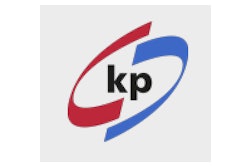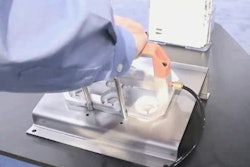
If you've written off polyvinyl chloride as a viable material in this
era of environmentally friendlier, green-tinged packaging, you may want
to review the facts. That's what our editorial staff learned during a
recent visit by Patty Enneking, Director of Global Sustainability and
Environmental Affairs, Klöckner Pentaplast. She shared with us the same
information she's shared with brand owners and major retailers.
Two things should be made clear up front:
A. Klöckner Pentaplast is a PVC film supplier, but it also supplies a
range of other polymer films too, including PETG, APET, PETG, PS, HIPS,
PP, and PLA. Additionally, it operates two integrated PET-bottle
recycling plants, one in Canada and one in Germany, turning used
bottles into recycled films.
B. Enneking knows her polymers well, having worked 15 years at the
American Plastic Council as vice president of packaging and consumer
products.
Frankly, I had my own assumptions about PVC and sustainability that were modified by what we heard.
Some key points she made:
- When comparing packaging materials there are rarely clear-cut winners; the complexity of sustainability is simply too complex.
- Because a product is recycled, includes recycled content, or is made from a renewable resource does not necessarily mean it is the most sustainable packaging. It’s important to look at the facts over the package’s life cycle to know for sure.
- Reducing packaging weight offers most significant opportunities to conserve raw materials and energy, reduce greenhouse gases, and minimize discard.
- The weight reduction benefits of lightweight materials often more than offsets the far higher recycling rates of heavier packaging materials.
- The product-to-package weight ratio is an excellent rule of thumb to use when making top-line decisions about packaging efficiency. Key is to deliver the most amount of product with the least amount of packaging.
- Plastics packaging recycling in the US is primarily limited to bottles only; most municipal recycling programs do not accept nonbottle rigid plastic containers such as blister packs and clamshells.
- The 2005 total plastic bottle recycling rate is 24.3%; for PET bottles, it's 23.1%, and for HDPE bottles its 27.1%.
- Claiming “biodegradable” in a landfill is of questionable value because most landfills are constructed to retard biodegradation.
- Plastic vs paper: Two plastic bags use 13% less total energy to produce than one paper bag; paper bags need a recycling rate of at least 50% to be more energy efficient than twice the number of plastics.
Some vinyl thoughts
And about vinyl? Here's what Enneking showed vinyl as:
- Second largest plastic worldwide behind polyethylene
- Worldwide vinyl resin production represents just 0.3% of all annual oil & gas consumption
- Vinyl is derived from 57% salt and 43% petroleum. This is compared to most other plastics which are derived 100% from petroleum
- Vinyl uses considerably less energy in its manufacture and generates far less greenhouse gases than other plastics.
- Phthalate plasticizers are not required for rigid vinyl packaging such as blisters and clamshells, but only to make vinyl flexible such as in shower curtains and blood and IV bags.
- Vinyl, which is inert in a landfill, is being recycled at a rate of 1 billion lbs. annually in the US.
- Enneking also noted that although dioxins have been linked to PVC, most dioxins are caused by lightning, backyard trash burning, forest fires and other nonpackaging applications.
- Moreover, she points out that, according to the EPA, dioxin emissions have dropped 90% since 1987. During that same period in the U.S., vinyl production escalated to more than 15 billion pounds.
- And finally:
- There are no national bans within packaging directives for the use of rigid vinyl packaging in the European Union or Asian Rim.
For more information on vinyl, visit the newly launched Web site of Vinyl News Service at www.vinylnewsservice.com























